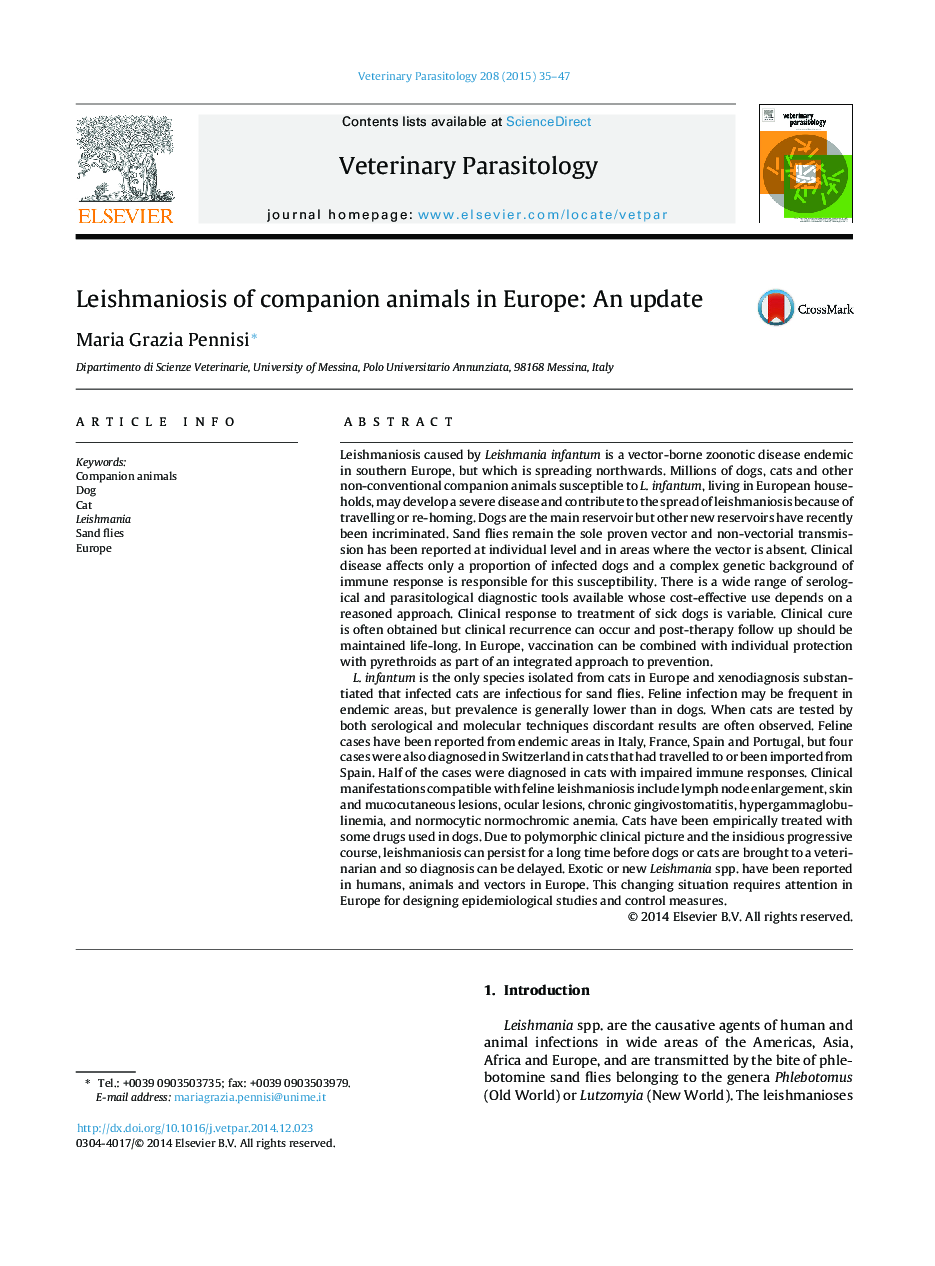| کد مقاله | کد نشریه | سال انتشار | مقاله انگلیسی | نسخه تمام متن |
|---|---|---|---|---|
| 5802695 | 1555675 | 2015 | 13 صفحه PDF | دانلود رایگان |

Leishmaniosis caused by Leishmania infantum is a vector-borne zoonotic disease endemic in southern Europe, but which is spreading northwards. Millions of dogs, cats and other non-conventional companion animals susceptible to L. infantum, living in European households, may develop a severe disease and contribute to the spread of leishmaniosis because of travelling or re-homing. Dogs are the main reservoir but other new reservoirs have recently been incriminated. Sand flies remain the sole proven vector and non-vectorial transmission has been reported at individual level and in areas where the vector is absent. Clinical disease affects only a proportion of infected dogs and a complex genetic background of immune response is responsible for this susceptibility. There is a wide range of serological and parasitological diagnostic tools available whose cost-effective use depends on a reasoned approach. Clinical response to treatment of sick dogs is variable. Clinical cure is often obtained but clinical recurrence can occur and post-therapy follow up should be maintained life-long. In Europe, vaccination can be combined with individual protection with pyrethroids as part of an integrated approach to prevention.L. infantum is the only species isolated from cats in Europe and xenodiagnosis substantiated that infected cats are infectious for sand flies. Feline infection may be frequent in endemic areas, but prevalence is generally lower than in dogs. When cats are tested by both serological and molecular techniques discordant results are often observed. Feline cases have been reported from endemic areas in Italy, France, Spain and Portugal, but four cases were also diagnosed in Switzerland in cats that had travelled to or been imported from Spain. Half of the cases were diagnosed in cats with impaired immune responses. Clinical manifestations compatible with feline leishmaniosis include lymph node enlargement, skin and mucocutaneous lesions, ocular lesions, chronic gingivostomatitis, hypergammaglobulinemia, and normocytic normochromic anemia. Cats have been empirically treated with some drugs used in dogs. Due to polymorphic clinical picture and the insidious progressive course, leishmaniosis can persist for a long time before dogs or cats are brought to a veterinarian and so diagnosis can be delayed. Exotic or new Leishmania spp. have been reported in humans, animals and vectors in Europe. This changing situation requires attention in Europe for designing epidemiological studies and control measures.
Journal: Veterinary Parasitology - Volume 208, Issues 1â2, 28 February 2015, Pages 35-47